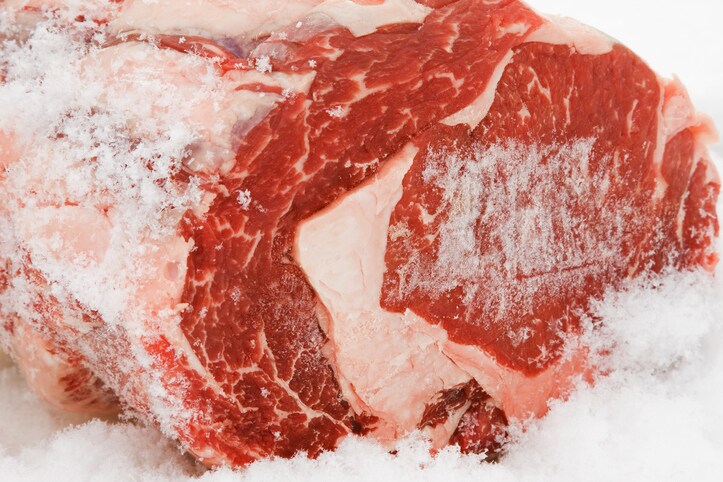 Frozen beef can be a challenge for meat processing plants when it comes to ensuring quality meat reaches the customer without metal contaminants. Most food manufacturers utilize food weighing and inspection equipment as part of their food safety program. But because the properties of various meat products can cause specific challenges, quality control folks should ensure that the right inspection technology is being utilized.
Frozen beef can be a challenge for meat processing plants when it comes to ensuring quality meat reaches the customer without metal contaminants. Most food manufacturers utilize food weighing and inspection equipment as part of their food safety program. But because the properties of various meat products can cause specific challenges, quality control folks should ensure that the right inspection technology is being utilized.
We’ve previously written about the difficulty of using metal detection technology in the meat processing industry because meat products have high “product effect.” Product effect involves the conductive properties of the food that can mimic a foreign object, and cause the detector to incorrectly signal a physical contaminant.
This false positive often necessitates a compromise in sensitivity to avoid false rejections. With temperature, salt content and product size changing during processing, product effect can vary, too, making consistent foreign object detection difficult. It also poses an ongoing challenge to avoid excessive false rejects which increase the potential for costly scrap or rework.
Meat processor sends in frozen bone-in meat to challenge Multiscan metal detector technology
One U.S.-based meat company was aware of these difficulties, so they wanted to test out the latest Multiscan metal detection technology to see if it could overcome the product effect challenges. With Multiscan technology, the operator utilizes up to five frequencies from 50 kHz to 1000 kHz. The equipment scans through each frequency, effectively acting like five metal detectors in one.
In this particular case, the contaminants of concern were metal fasteners like nuts, bolts, and washers – pieces of metal that could fall off quickly moving, vibrating, meat processing equipment. So a large uncut chunk of bone-in beef was sent to our office by the company to test if a metal detector could discover these types of metal fasteners within the meat. The product we received contained three custom contaminants: a washer, bolt, and nut.
The large frozen beef block, which was packaged in an open tub, was tested two different ways; when the beef had thawed in a 65F room for 30 min, and then after thawing for 75 min. This mirrored the way the meat would work its way through this processing plant, slightly thawing the longer the process.
Five different frequencies were utilized for detection (300, 450, 575, 725, 900) before ferrous, nonferrous, and stainless steel metal samples were used to assess detection. Different shapes and orientations of metal contaminants have different magnetic and conductive reactions. Alloys of metals have different reactions too, which can also change the resulting signals seen by the metal detector. Multiscan technology is beneficial in detecting different metals at different locations in the package by using different frequencies, thus increasing the probability of detecting smaller sizes of metal.
The product test results were positive. The nut, bolt, and washer were detected at both levels of thaw using the Multiscan metal detector, providing peace of mind that the food can be kept safe
As we noted, processing meat products presents product quality and safety challenges to food processors. But whether it’s finding a nut, bolt, washer, or other pieces of metal hidden in a cut of frozen or thawed beef, the newest metal detection technology can help overcome these meat inspection challenges. That’s no joke.
If you want to learn more about metal detection in the meat industry, watch the 30-minute on-demand webinar: Overcoming the Challenges of Foreign Object Detection in Meat Processing





Leave a Reply